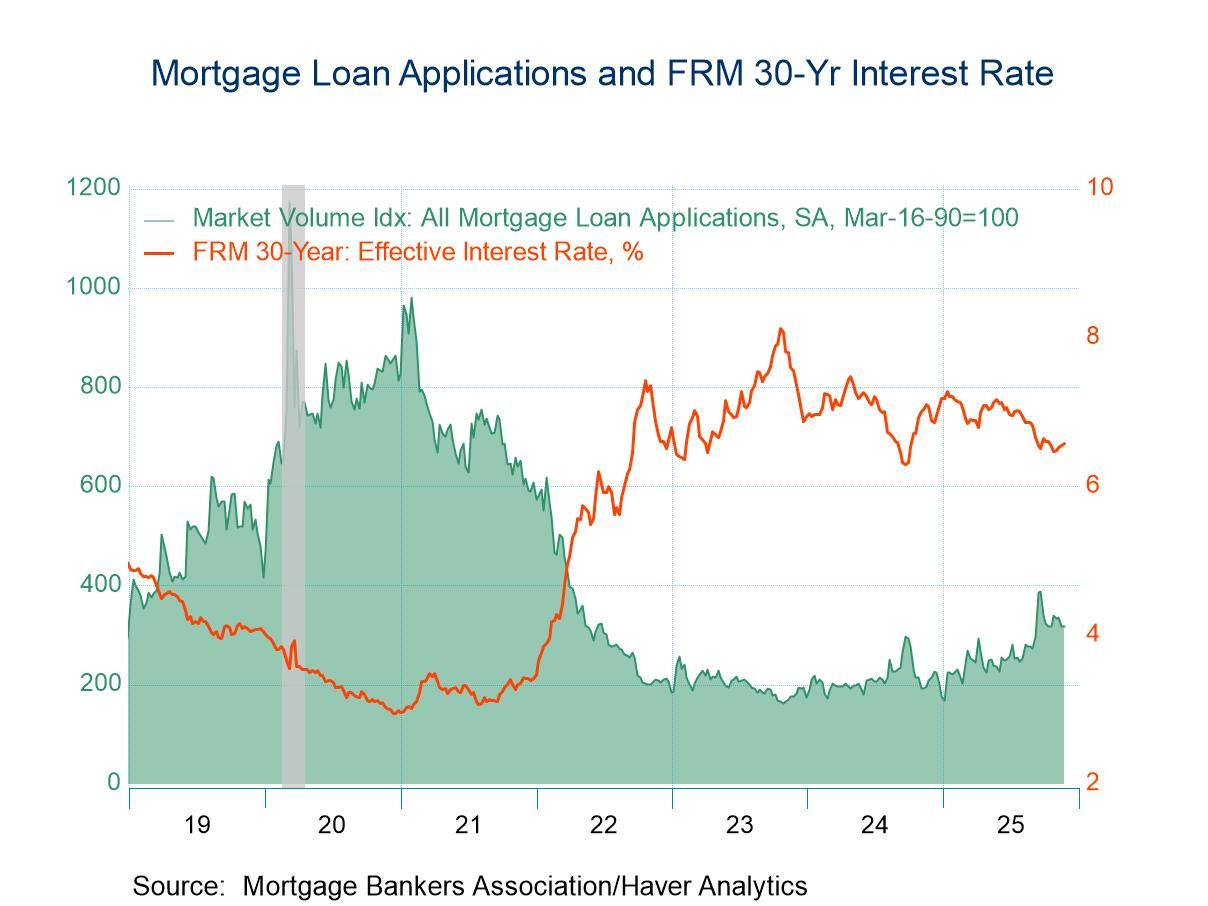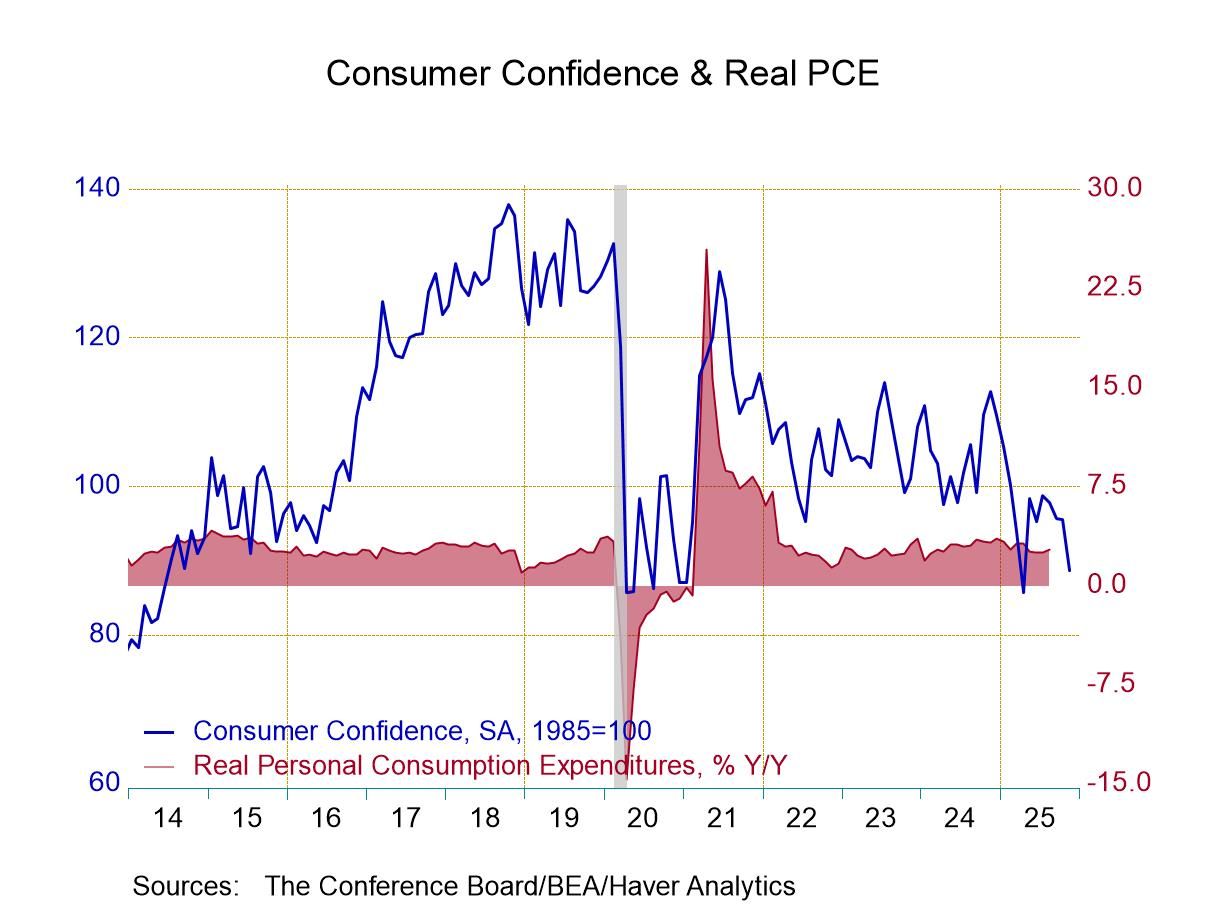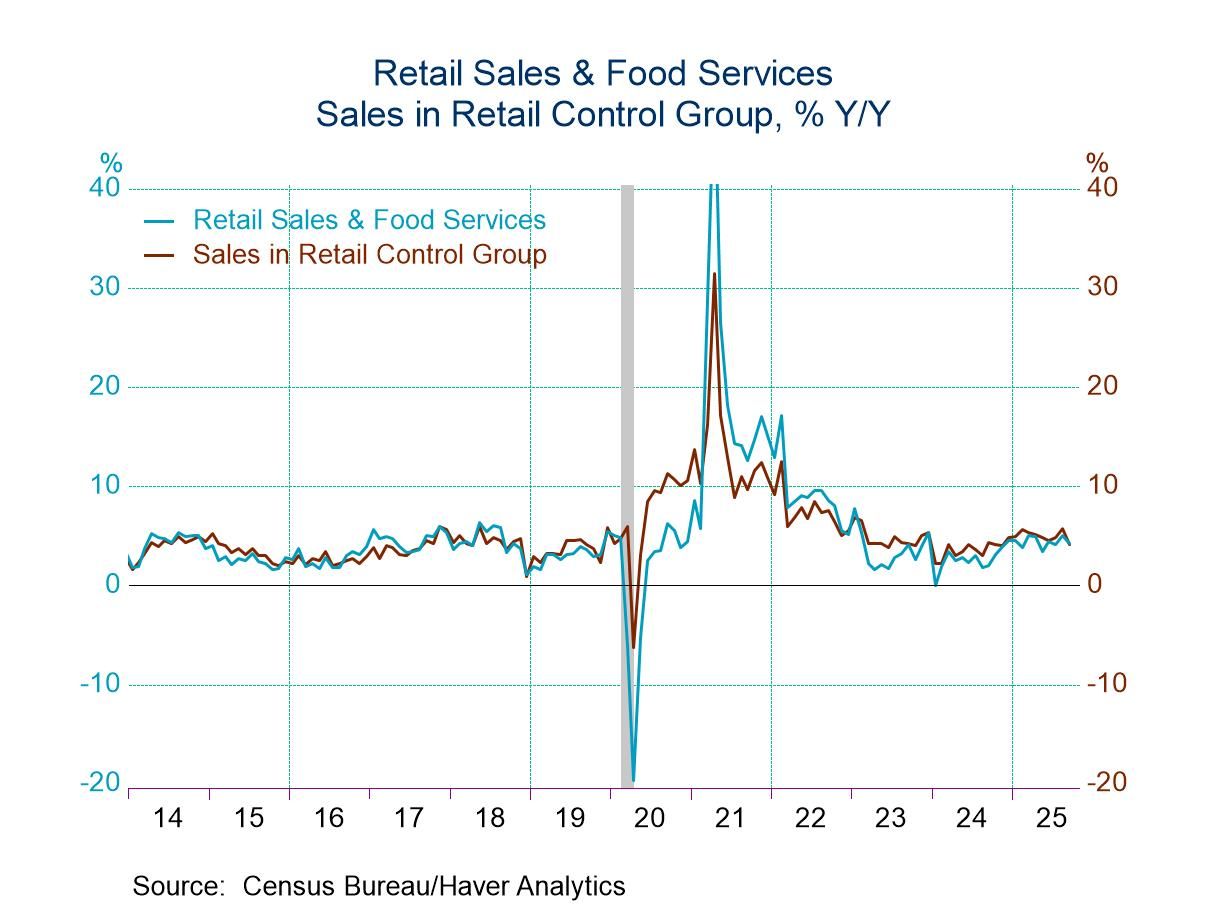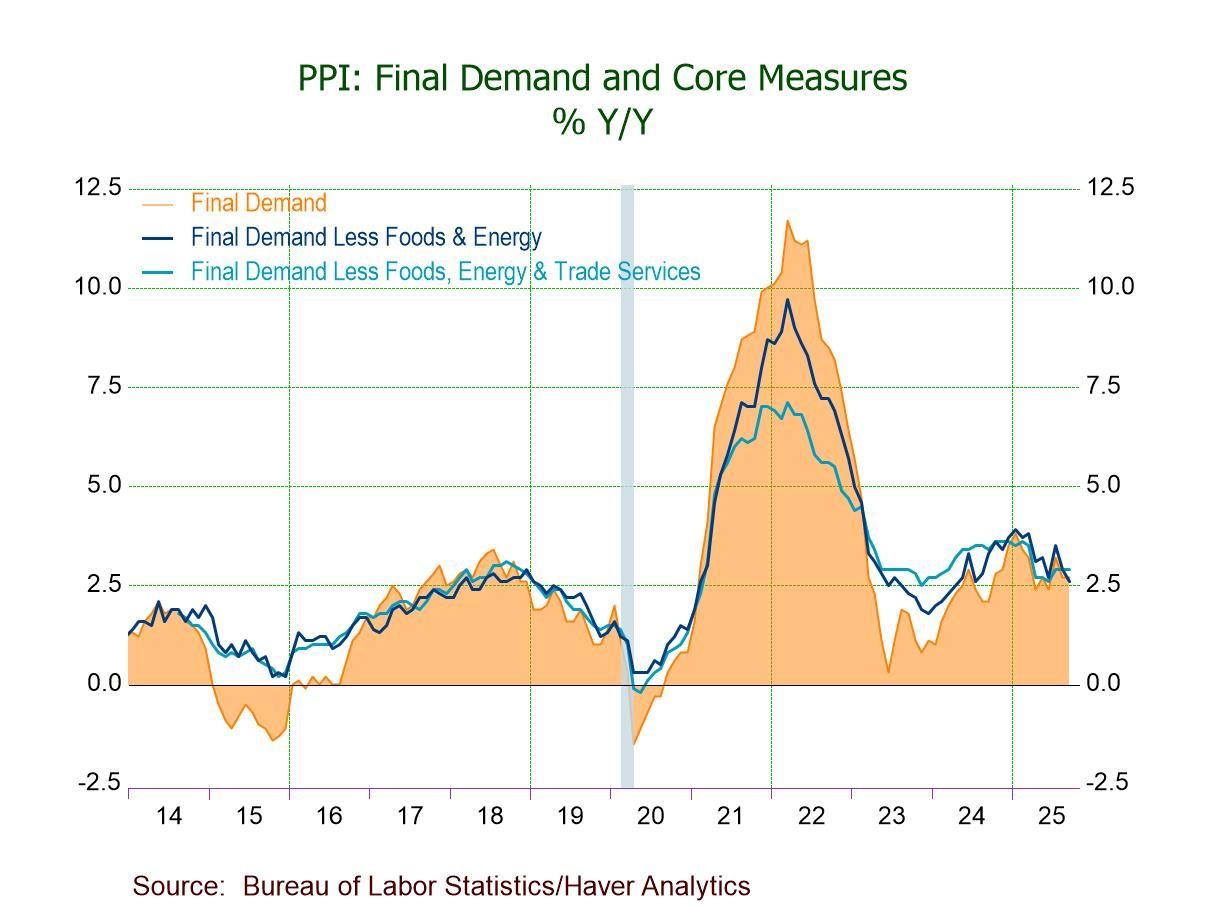German Output Pops in August

Industrial output in Germany rose by 2.9% in August compared to July; consumer goods output was flat, capital goods output surged by 6.9%, while the output of intermediate goods ticked up by 0.1%. The gain in output clearly is being carried by capital goods in August reflecting that sector’s turnaround from a sharp drop in July.
Monthly patterns The monthly output figures for July show that German output fell in all major categories a month ago, so the August report is substantially a rebound report. However, in June output was broadly higher as it rose in all categories except for consumer goods output, where it fell by 0.9% on the month.
Manufacturing and industry: Sequential growth in output Sequential growth rates show headline output in Germany on the road to repair; while the road may not be long, it still is winding. Industrial output fell by 2.5% over 12 months. That led to a 3.5% annual rate drop over six months as the sector weakened further, but then it jumped to a 6.7% annual rate increase over three months. Over the same sequence of months, the output of consumer goods drops at progressively faster growth rates. On the other hand, capital goods show acceleration and progress on this same timeline; after falling by 1.1% over 12 months, capital goods output rises by 2.4% at an annual rate over six months, and then explodes at a 23.9% annual rate over three months. Intermediate goods output declines over all horizons, dropping by 5.6% over 12 months, dropping even faster at a 7.5% annual rate over six months, then trimming the decline pace to minus 2.8% over three months.
Construction Construction also shows an uneven path with output dropping in August and in July and with sequential growth rates for construction falling over six months and 12 months but then eking out a small gain over three months.
Industrial surveys Industrial surveys for Germany show slowing. These gauges in August compared to July are weaker across the broad. The August values are also weaker than their June values. Sequential averages of these industrial surveys show some creeping improvement in the ZEW survey, little change in the IFO manufacturing survey, some small tendency for improvement in IFO manufacturing expectations, while the EU Commission industrial index for Germany progressively weakens from its averages over 12-months to six-months to three-months.
Other Europe (Four early reporters) Industrial output in four other early reporting European countries shows increases in output for France and Portugal, contrasted to declines for Spain and Norway. None of these countries have two months in a row of output gains or output declines in August or July. June is another month in which output increases in two of them and decreases in two others. The recent monthly readings of output in Europe have been uneven. Sequential calculations for output in these countries shows manufacturing staggering towards better days in France where output posts a 10.4% annual rate increase over three months, following weak and uneven performance over six months and 12 months. Spain shows clear progressive deterioration with output moving from a 3.7% decline over 12 months to a 19.4% annual rate decline over six months to a 27.1% annual rate decline over three months. Portugal follows that progression but with negative growth rates that are about half of the ones posted by Spain. Contrarily, Norway shows progressive acceleration from their 3% growth over 12 months to a 9.1% annual rate increase over six months, and to a 12% annual rate increase over three months.
Quarter-to-date With all the monthly volatility, the quarter-to-date progress is not a given. It turns out to be negative for overall industrial production in Germany as well as for all three major sectors and construction. Real manufacturing orders are increasing in the quarter, despite falling in August; they are rising at an annualized quarterly rate of 16.9%. Real manufacturing sales, however, make a gain in August after declines in June and July but log a 6.6% annual rate decline in the quarter to date. The four industrial surveys for Germany show declines in the quarter-to-date compared to the previous quarter for three of the four metrics. Industrial output in the four other early reporting European countries shows exactly what you would expect: two increases versus 2 declines among the four reporters.
Queue standings over 24 years The queue standings that rank either growth rates or survey levels over the last 24 years shows rankings up and down the line regardless of whether it's a growth rate or a survey value compared to its history with rankings under 50%- with one exception. Industrial production in Norway has the year-over-year growth rate that ranks in the 70th percentile (the top 30% of all its historic growth rates). However, apart from Norway, the strongest rankings in the table are for industrial production in France with a 45.9 percentile standing, and in Portugal with a 43.4 percentile standing. For Germany, the strongest sector growth rate as a standing in the 29th percentile and that's for capital goods output. German real manufacturing orders have a 23.3 percentile standing, real sales in manufacturing have a 17.4 percentile standing, ranked on the level of their surveys in August. The various 4 surveys in the table have rankings that range from a high of 14.2% for the ZEW current index to 4.9% for IFO manufacturing output.
Summing up Despite a nice bump up in output in August, there is little here to bend trends higher or buoy expectations. Output growth and industrial rankings are still weak. European countries are mired in the same weakness as Germany. Conditions remain touch and go in an environment with a deteriorating geopolitical background and lingering inflation that is keeping central bankers wary, and for a time, back on the sidelines on hold despite being in easing cycles.

Robert Brusca
AuthorMore in Author Profile »Robert A. Brusca is Chief Economist of Fact and Opinion Economics, a consulting firm he founded in Manhattan. He has been an economist on Wall Street for over 25 years. He has visited central banking and large institutional clients in over 30 countries in his career as an economist. Mr. Brusca was a Divisional Research Chief at the Federal Reserve Bank of NY (Chief of the International Financial markets Division), a Fed Watcher at Irving Trust and Chief Economist at Nikko Securities International. He is widely quoted and appears in various media. Mr. Brusca holds an MA and Ph.D. in economics from Michigan State University and a BA in Economics from the University of Michigan. His research pursues his strong interests in non aligned policy economics as well as international economics. FAO Economics’ research targets investors to assist them in making better investment decisions in stocks, bonds and in a variety of international assets. The company does not manage money and has no conflicts in giving economic advice.






